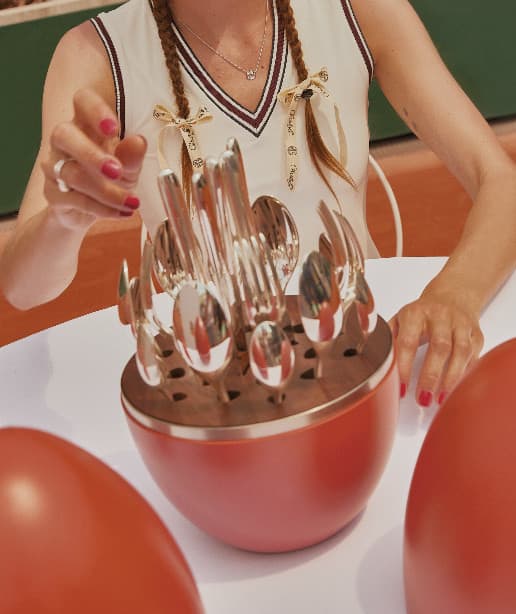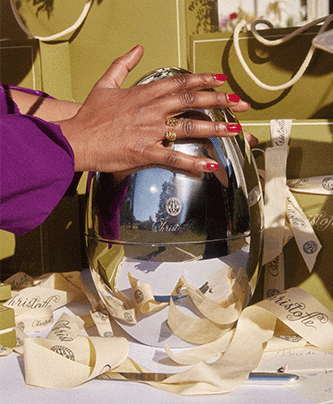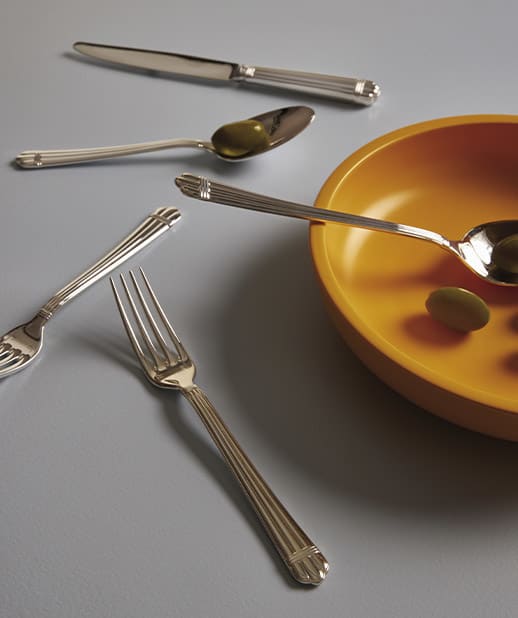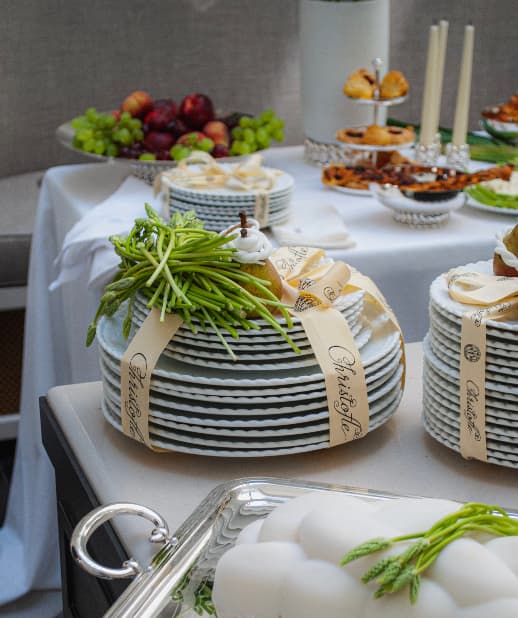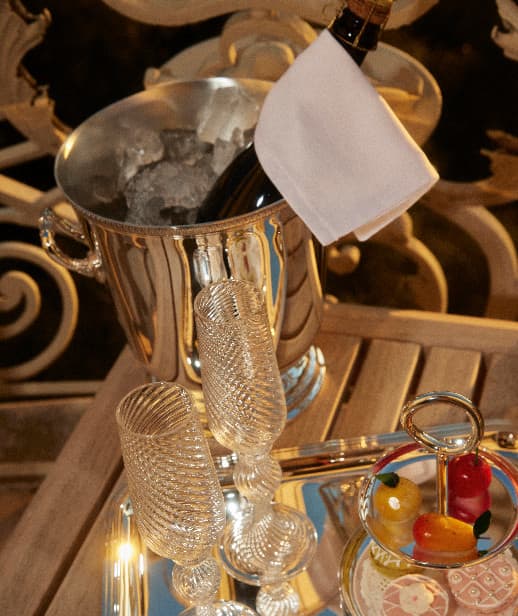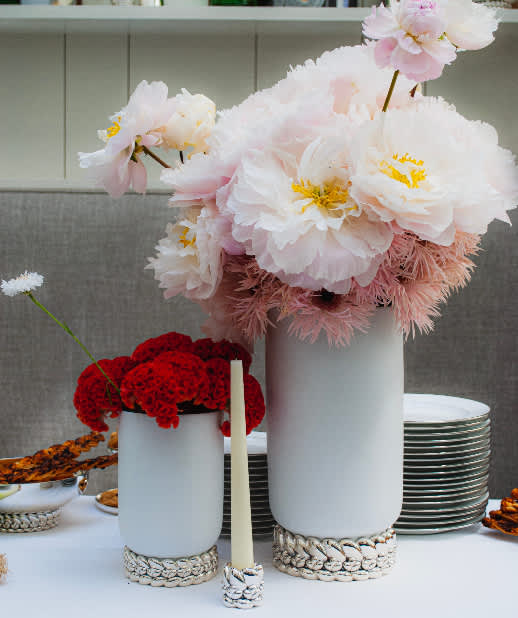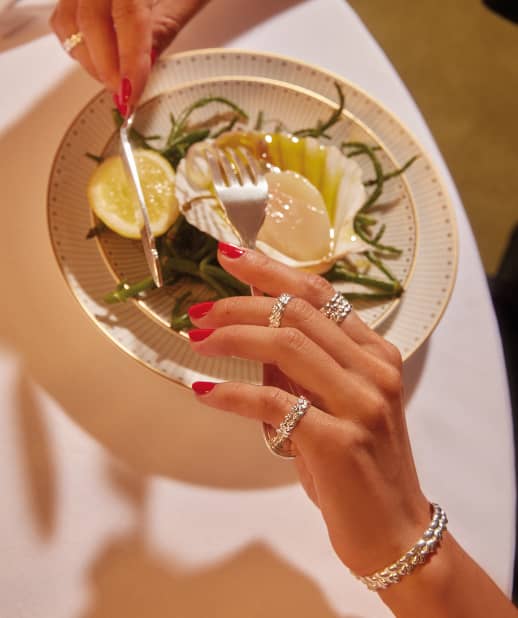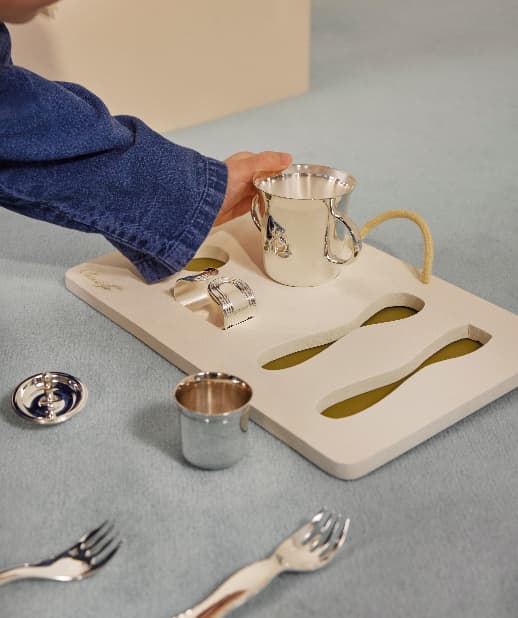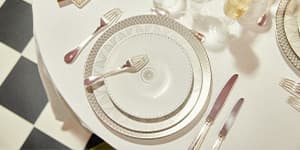Metal has been at the heart of the Maison Christofle's business since its foundation. Here is a quick overview of our history with precious metals!
Precious metals
Gold, the epitome of a noble metal, is remarkably resistant to alteration. Despite its softness, it is rarely utilized in its pure form. When alloyed with other metals, it gains the requisite strength and acquires the desired hue. Maison Christofle employs gold in its goldsmithing, jewelry, and embellishment of select porcelain and crystal designs.
For jewelry, Christofle typically employs an alloy consisting of 75% gold mixed with copper and silver, known as 750 thousandths (18 carats). The pink tint of the gold becomes more pronounced with a higher proportion of copper. Conversely, white gold is an alloy of gold and silver. To prevent tarnishing, Christofle's white gold undergoes rhodium-plating.



Silver, prized for its malleability, ductility, and lustrous appearance, holds a special place among noble metals for goldsmiths. Maison Christofle utilizes silver in crafting both functional and decorative items, as well as in the creation of jewelry.
Similar to gold, silver is too soft to be used in its pure form. For solid silver items, Maison Christofle employs an alloy with a minimum of 93% silver and copper, ensuring a title of 925 thousandths. However, for silver-plated items, 99.9% pure silver is used.
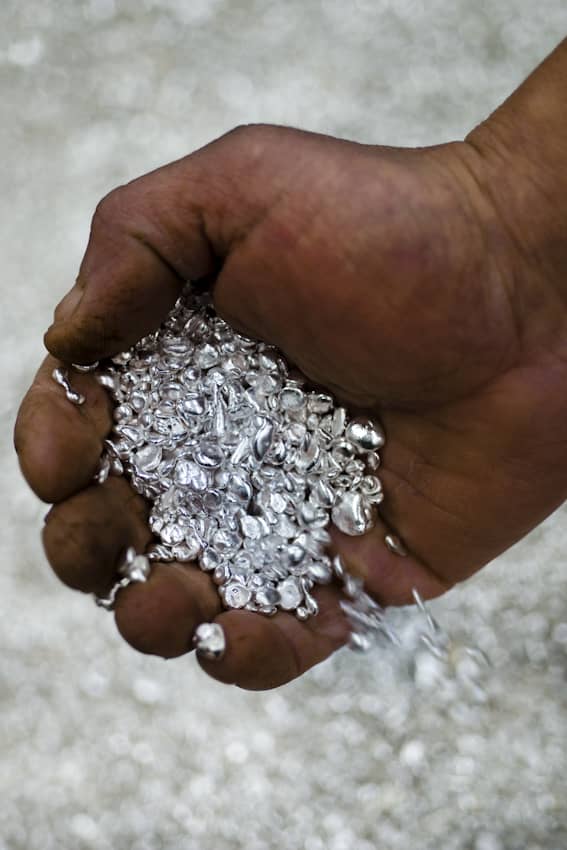

Pure silver granaille
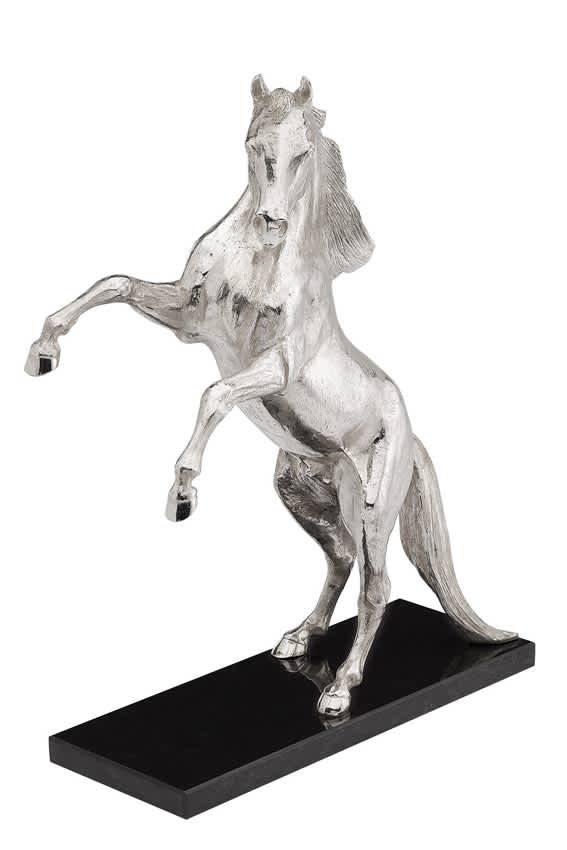

Sterling silver horse
Non-noble metals
Non-noble metals are often used in creating alloys with noble metals to enhance their properties. These alloys are essential for improving the strength, durability, and other characteristics of the final product in goldsmithing and metalwork.
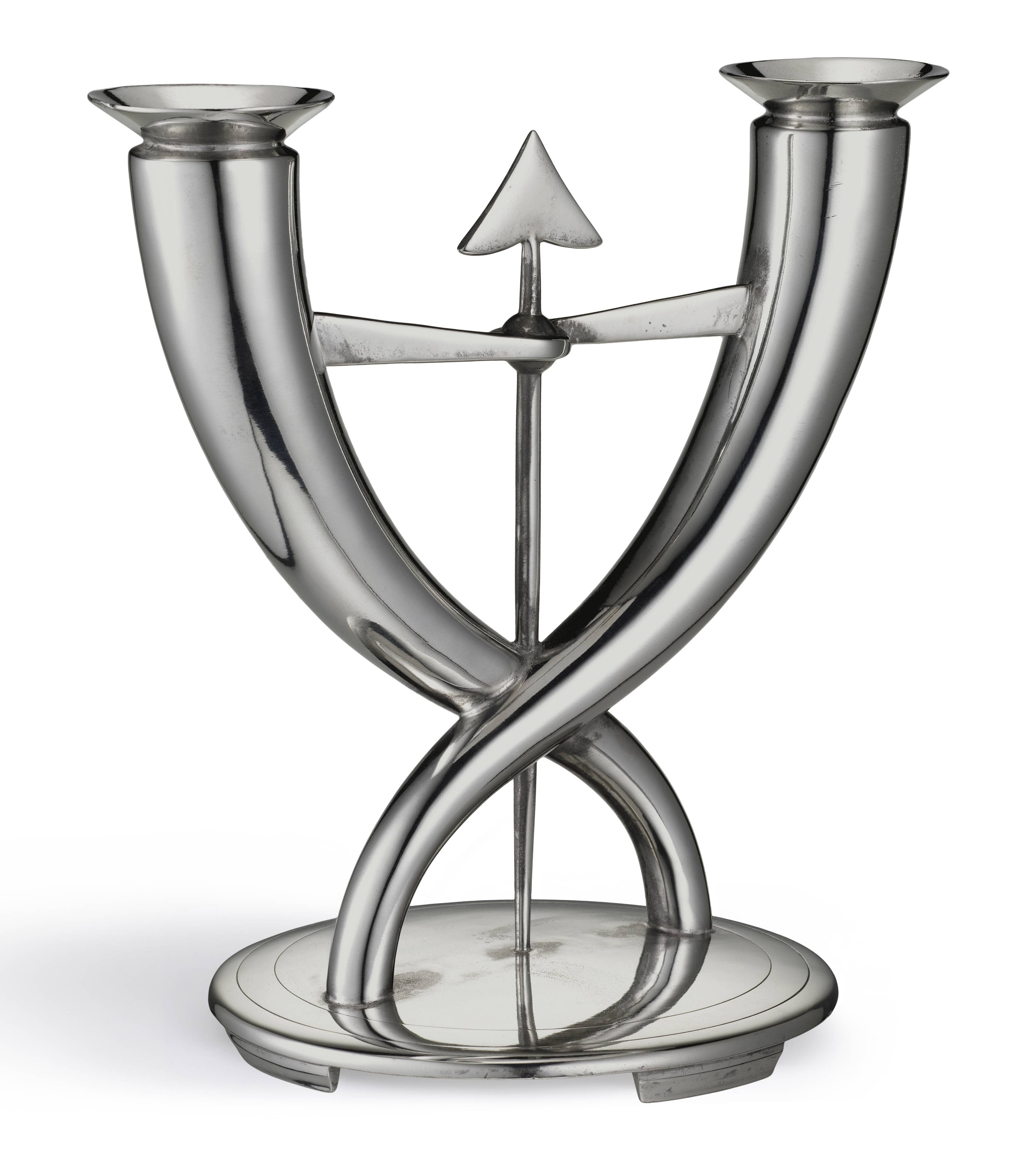

Arrow candelabra (1926)
Tin, with its grey and soft characteristics, is primarily utilized as an alloy for soldering and for creating certain high-relief elements in silver items.
This metal, combined with copper and antimony, was used by Maison Christofle for two historical collections: Gallia (1898-1974) and Etains de Carville (1926-1937).
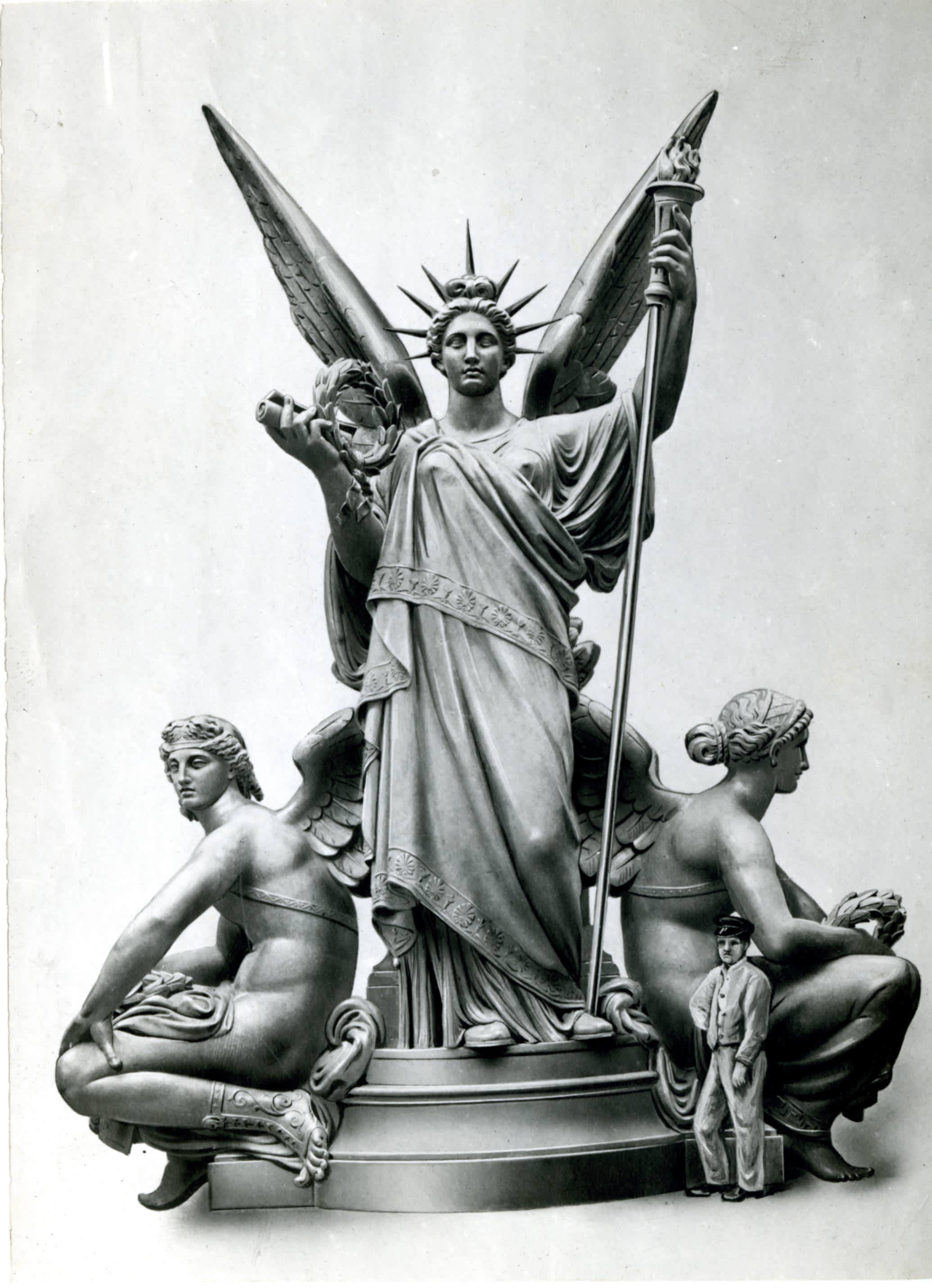

Gilded copper, Opéra de Paris
Copper, known for its reddish hue, ductility, and malleability, is used for specific moldings. Its excellent electrical conductivity also made it the preferred metal for the extensive electroplating conducted by the House until the Second World War.
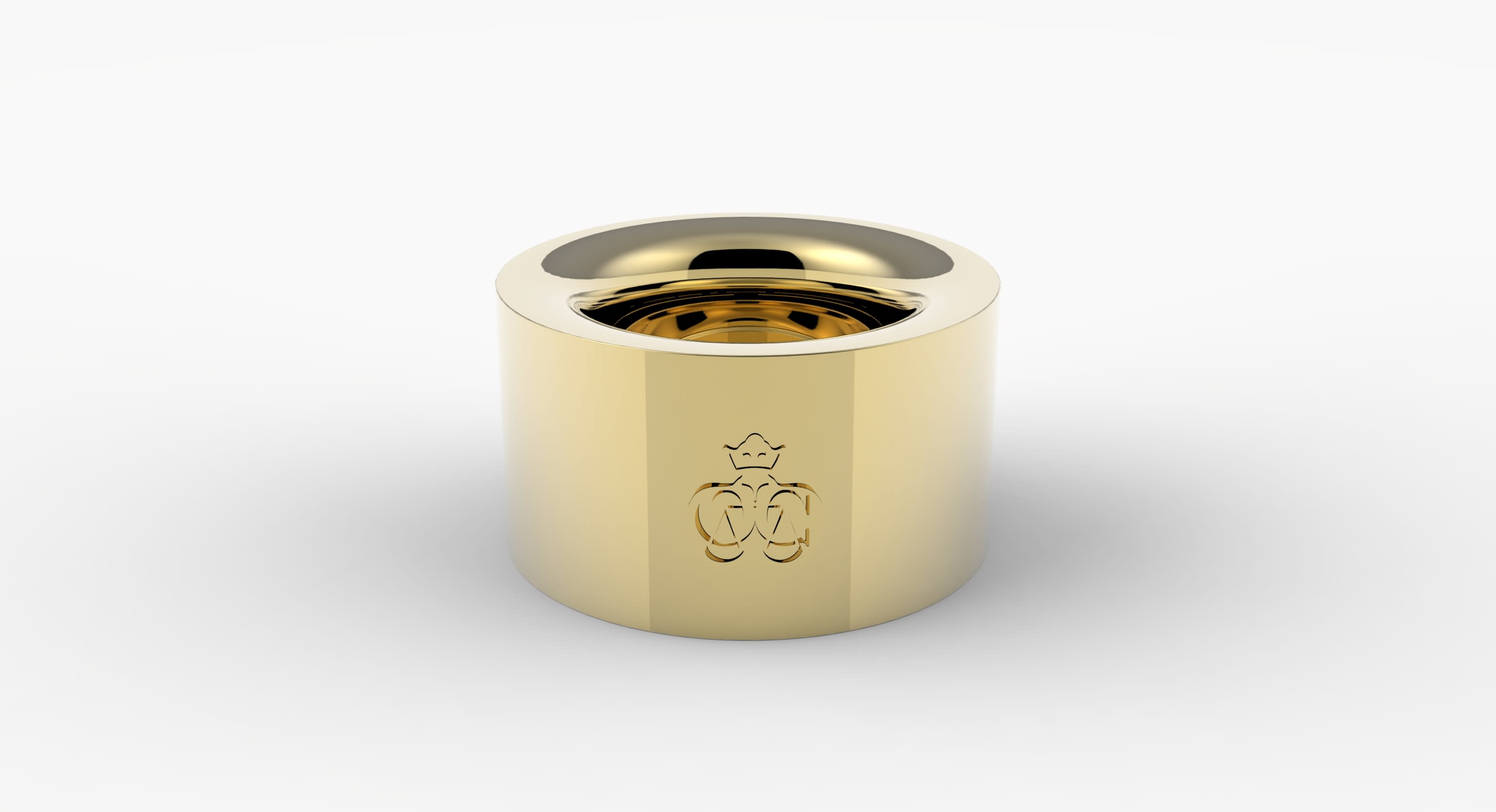

Brass votive
Brass, often referred to as yellow copper, is an alloy of copper and zinc. It is commonly used for flat and hollow items that will later be silver-plated. Brass is easily deformable and can be silver-plated or gilt with relative ease.
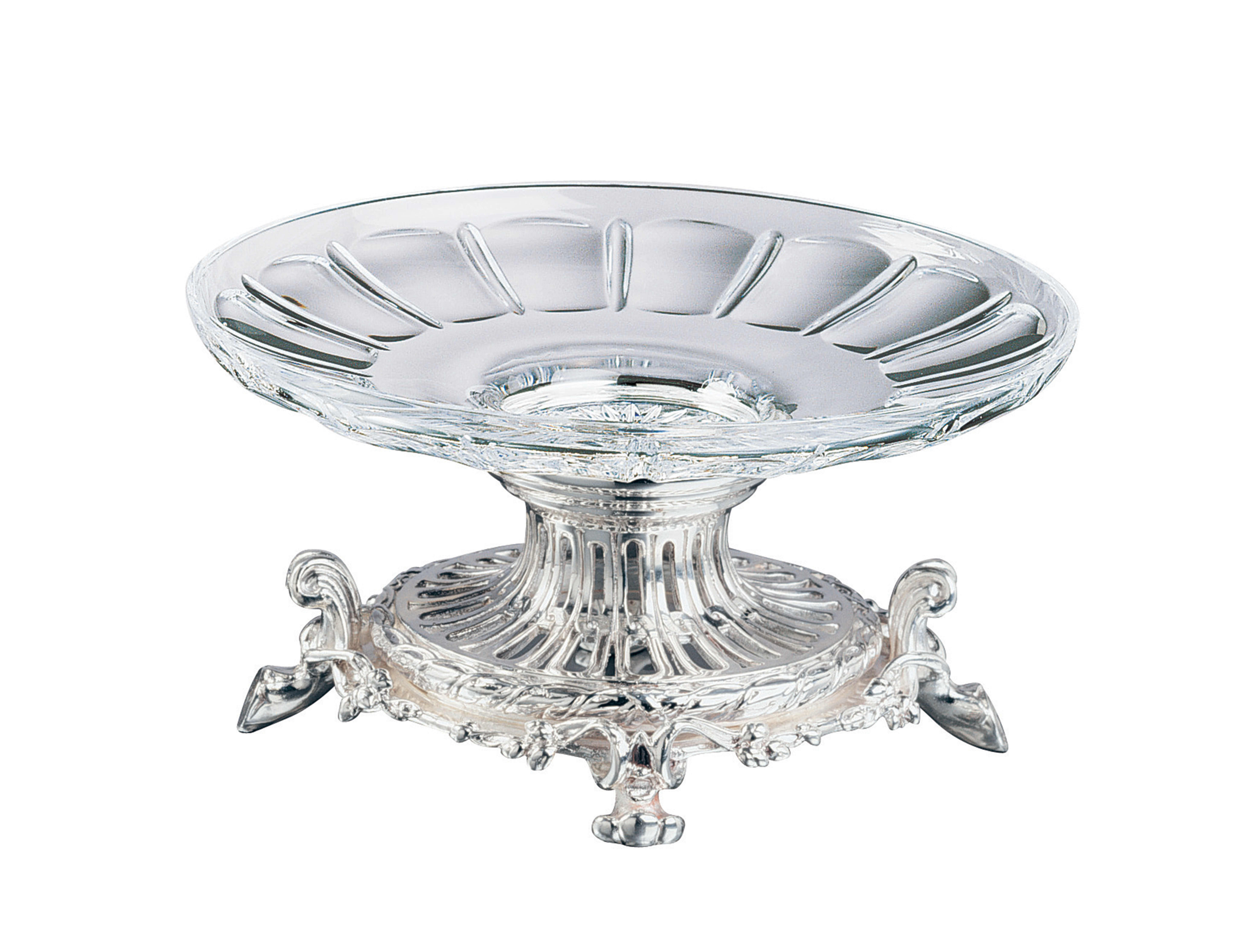

Eugénie table centrepiece - Silvered bronze
Bronze is an alloy of copper and tin, with proportions varying based on the desired characteristics. It is a fluid alloy, often used for high-relief elements such as feet, buttons, handles, or sculptures. Bronze finishes include patination, silvering, or gilding.


Cluny spoons
Nickel silver, also known as German silver, is a white alloy of copper, zinc, and nickel.
It is more resistant than brass and is primarily used for silver-plated cutlery.
Maison Christofle previously utilized it for its hotel collections under the name "White Metal."
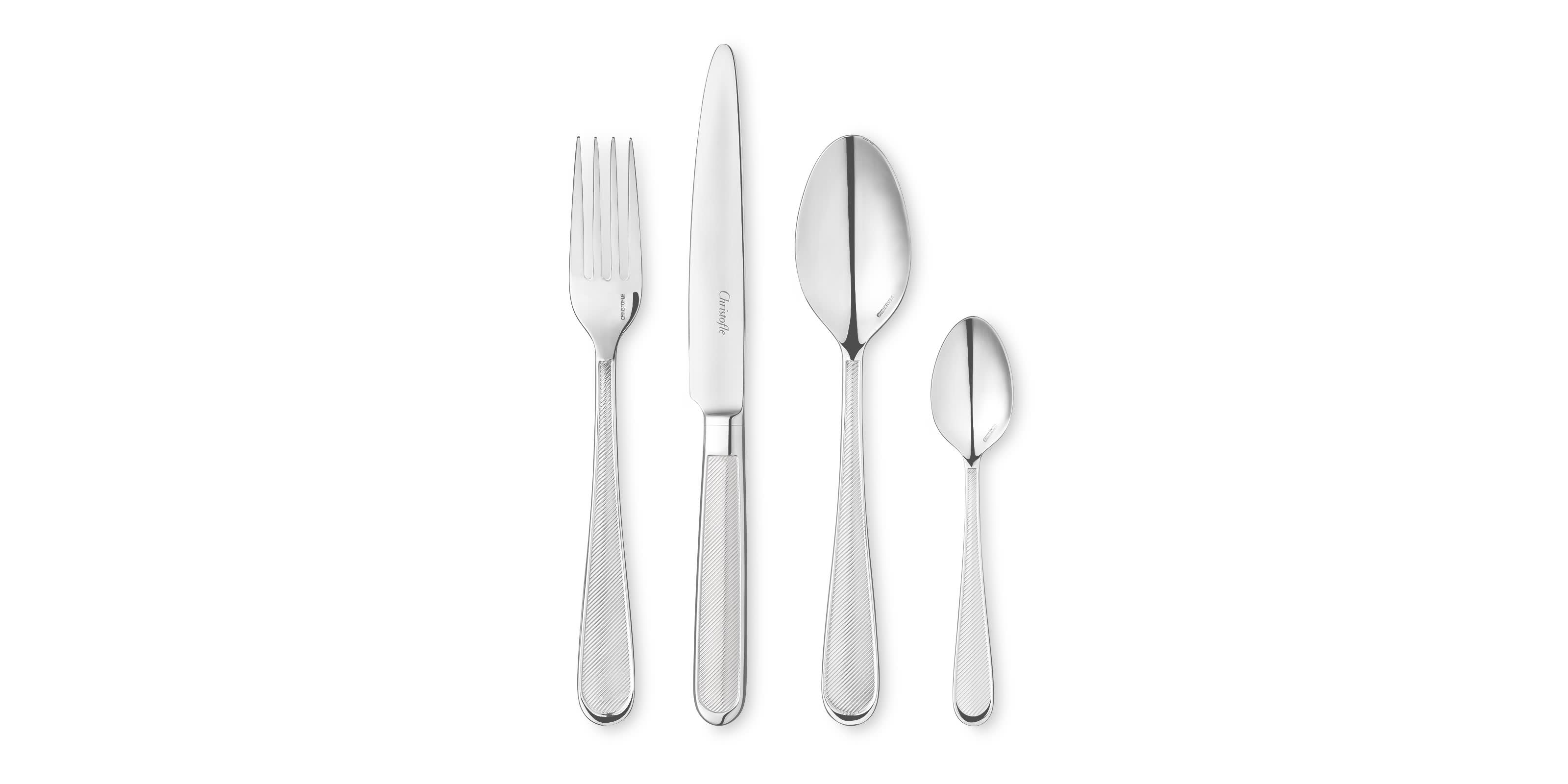

Concorde Flatware
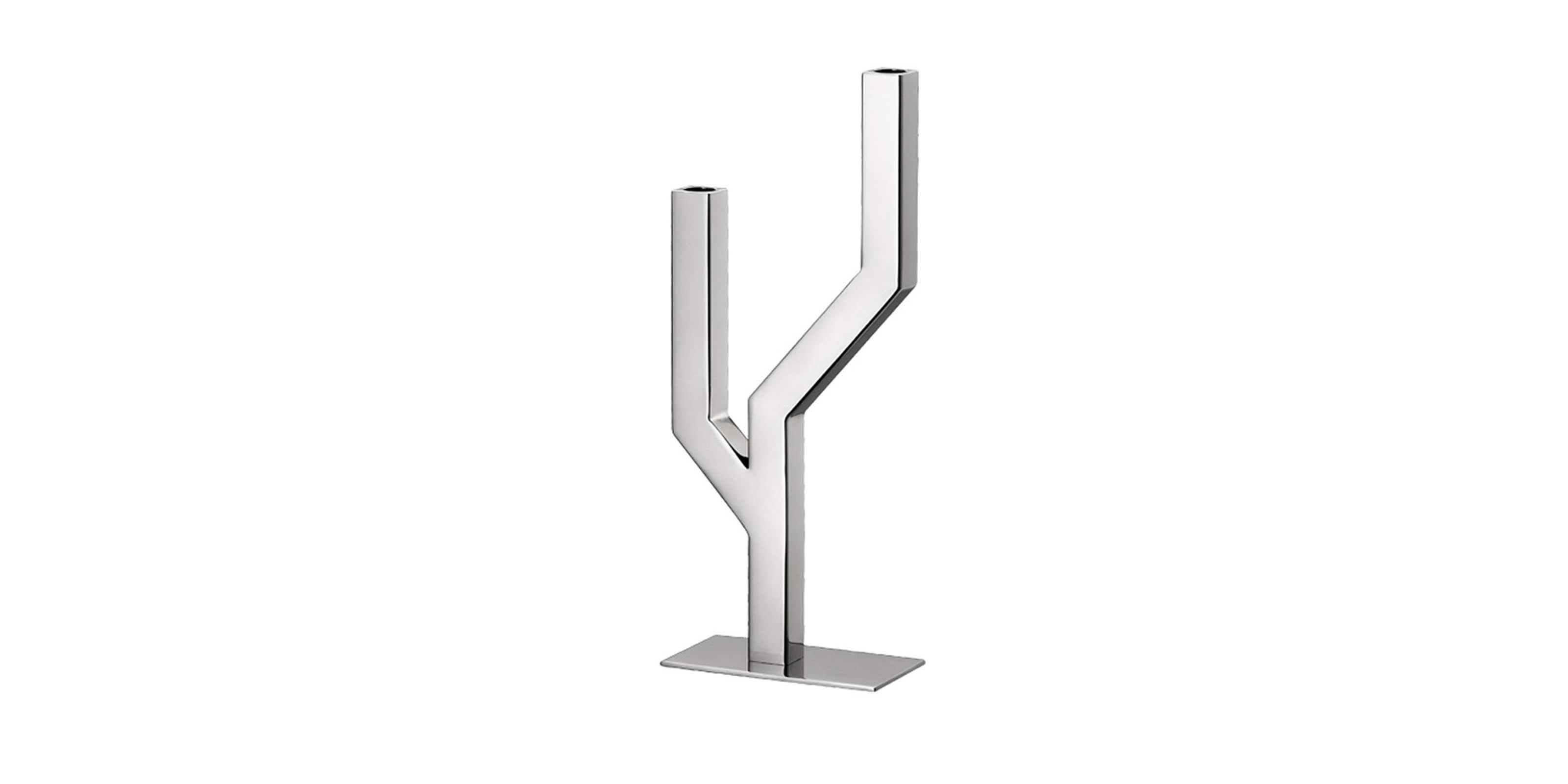

Arborescence Candelabra
Steel, an alloy of grey iron and carbon, is commonly used for tools. It was once used for all cutlery blades due to its easy sharpening properties. However, after the Second World War, stainless steel became more prevalent.
The addition of chromium (10%) and nickel (18%) to the alloy makes stainless steel less prone to corrosion. Today, all blades are made of stainless steel. Maison Christofle offers collections of cutlery and tableware in steel called 18/10 steel or 304 stainless steel.
Today, the blades are made of 13/0 steel, an alloy with 13% chromium, and is nickel-free.
Since its creation, Maison Christofle has demonstrated that the brilliance of its know-how is only matched by the brilliance of the metals that it never ceases to shape.


